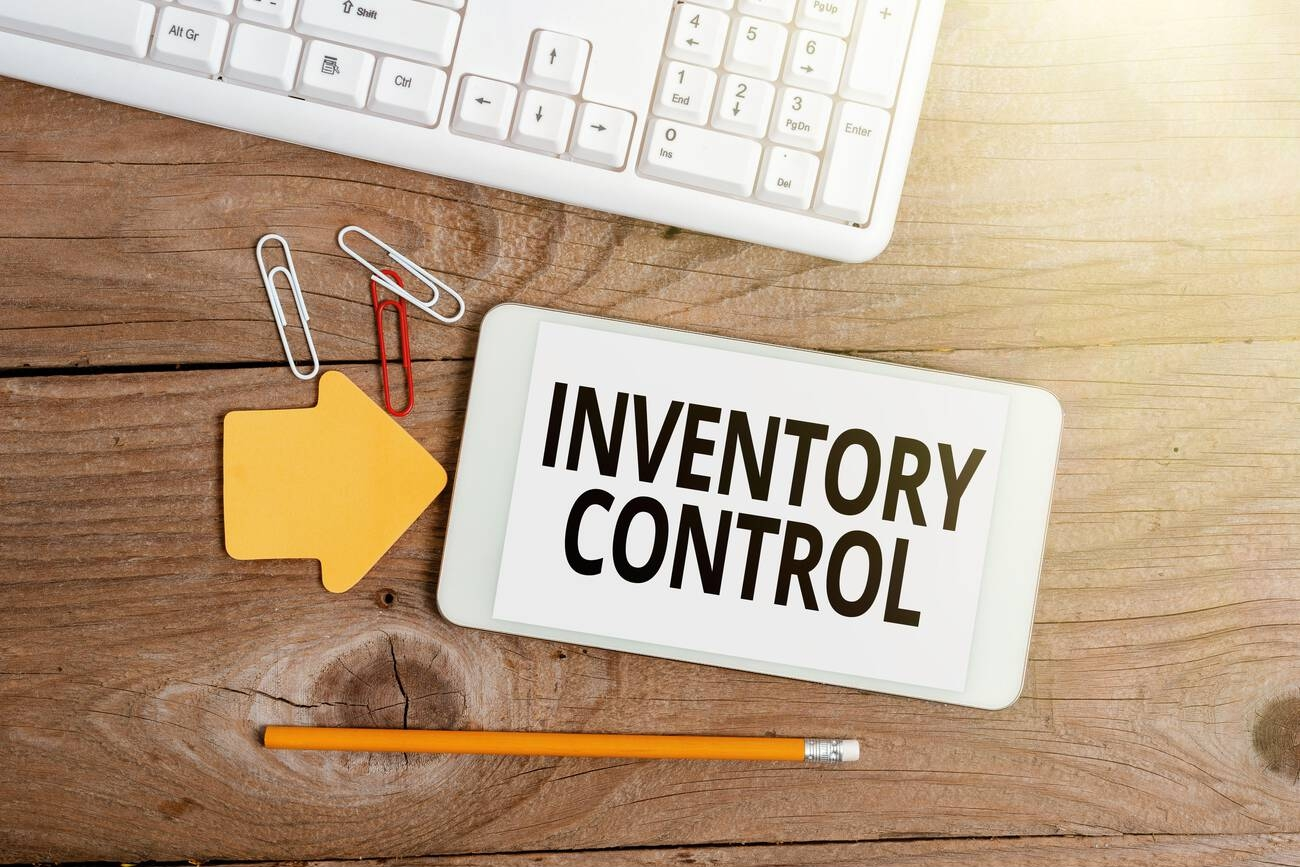Exploring Inventory Control Meaning: Techniques, and Importance
Inventory control is a fundamental process in businesses that supports effective operations, simplified logistics, and ultimately, customer satisfaction. People who work in the manufacturing, retail, or wholesale sectors are aware of how important inventory control is to their daily operations. It guarantees that they have the appropriate items in the appropriate amounts at the appropriate times to satisfy client orders and keep uninterrupted business operations.
This blog explores inventory control meaning, including its definition, applications, and critical role in the business market. We’ll provide you with the information and understanding you need to efficiently manage your inventory, cut expenses, and obtain a competitive advantage in the marketplace.
Inventory Control Meaning
Maintaining ideal inventory levels is the fundamental skill of inventory control. This means that the appropriate number of products should be easily accessible at the appropriate moment. It includes the careful control of inventory levels to maintain a careful equilibrium, effectively satisfying consumer demand while avoiding the dangers of either overstocking or understocking.
This calculated tactic reduces the possibility of stockouts, which can result in decreased revenue, frustrated clients, and a damaged reputation. On the other hand, it also stops excess inventory from building up, which wastes money, adds to storage expenses, and increases the chance of product obsolescence.
Beyond ensuring product availability and preventing financial pitfalls, effective inventory control fosters financial flexibility. By optimizing stock levels, businesses free up valuable capital that can be reinvested in other areas, such as product development, marketing initiatives, or expanding business operations. This financial flexibility empowers businesses to adapt to changing market dynamics and seize new opportunities.
Systems for Inventory Control
After delving into the basic concept of inventory control, the next logical step would be to equip ourselves with the means of putting the theory into reality. Now, let’s talk about inventory management systems. These solutions are the foundation of effective stock control, giving companies the power to automate repetitive procedures, optimize workflows, and obtain insightful inventory data.
Businesses can choose the inventory management system that best fits their unique requirements and operational scale by knowing the types of systems and their features.
Perpetual vs. Periodic Inventory Systems
The perpetual inventory system updates stock levels in real-time through technology, minimizing errors and providing up-to-date inventory information. In contrast, the periodic inventory system relies on regular physical counts, offering snapshots of inventory levels at specific intervals.
Selecting the appropriate system is essential for maintaining accurate records and effective operations in the field of inventory management. The two main systems that rule the terrain are the periodic and perpetual inventory systems. Knowing the differences between them in terms of features and functionality enables organizations to choose the system that best suits their needs.
The Perpetual Inventory System
This technologically advanced system provides real-time stock level updates. The system automatically modifies the inventory records whenever a product is bought or sold, giving a consistent and precise image of the stock that is available. This reduces the possibility of errors related to human data entry and does away with the requirement for frequent physical counts.
Advantages:
- Makes real-time inventory data available, helping companies to make educated decisions about ordering, production, and pricing since they have access to the most recent information on stock levels.
- There’s decreased danger of stockouts as the system notifies companies when inventory levels cross critical thresholds, enabling them to place fresh orders on time and prevent stockouts.
- Enhanced productivity is seen as the time spent on manual inventory checks is decreased and streamlined processes are made possible by real-time data.
Drawbacks:
- Implementing and maintaining a perpetual inventory system can be expensive, especially for businesses with a vast product range.
- There is a high level of technological dependence as the system relies heavily on technology and can be susceptible to technical glitches or system outages.
The Periodic Inventory System
Physical inventory counts are the basis of this conventional approach, which is usually used at the conclusion of an accounting period. The cost of goods sold (COGS) for the duration of the period is represented by the discrepancy between the physical count and the book inventory balance.
Advantages:
- Periodic systems are less expensive initially as compared to the perpetual inventory systems.
- They also require less technical know-how than perpetual systems, which makes them appropriate for smaller companies with tighter budgets.
- The method requires little staff training and is very simple to deploy.
Drawbacks:
- Inventory data is not available in real-time, potentially leading to inaccurate information and stockouts.
- Physical counts can be labor-intensive and disruptive to regular business operations, particularly for companies that maintain sizable inventories making it time consuming.
Choosing the best inventory management system depends on a number of factors. First and foremost, the size and complexity of the company is crucial. Larger businesses with extensive product lines and high sales could find perpetual systems useful due to their capacity to offer real-time data.
On the other hand, periodic systems may prove to be more financially feasible for smaller enterprises that are limited by financial constraints. The speed at which inventory flows through the company is also quite important.
Companies with high turnover rates can benefit from perpetual systems, but those with lower turnover rates might be fine with periodic ones. In the end, the choice should be in line with the particular requirements and conditions of every company in order to maximize effectiveness and economy.
Objectives of Inventory Control
To fully profit from inventory control, implementation alone is insufficient. In order to genuinely succeed in stock management, companies need to go deeper and comprehend the fundamental goals of the process.
By acting as guiding principles, these objectives make sure that inventory control procedures are strategically in line with more general business objectives. Understanding these goals allows companies to customize their control strategies and use them to get the best outcomes possible in a number of areas of their operations.
Goals of Effective Inventory Control
Good stock control is a strategic process with several well-defined goals that goes beyond simple stock management and enhance a business’s overall performance. Businesses can use control systems with more purpose and achieve optimal results across all elements of their operations by having a clear understanding of these aims.
Cost Optimisation: The financial stability of a company is directly impacted by inventory management. Businesses can cut their storage expenses dramatically by holding less goods. The cost of warehousing and storage facilities can be high, and keeping a large amount of inventory consumes funds that would be better spent on marketing or product development.
Checkout our blog on ‘What is FBA? Shipping to Amazon FBA and selling without inventory’ to know how Amazon allows 3rd party vendors to store their products in Amazon’s fulfillment centers while Amazon handles everything else from there.
Striking the balance in inventory: Finding the right balance between having too much and too little inventory is essential to preventing stockouts and overstocking. Stockouts can result in lost revenue, irate consumers, and brand harm when a product isn’t accessible to meet demand.
Conversely, overstocking causes extra inventory to build up, which wastes money on needless storage, puts products at danger of becoming obsolete, and takes up capital that could be utilized for other purposes. Businesses can avoid stockouts and overstocking by maintaining ideal stock levels with the aid of effective inventory control.
Preserving Product Quality: Up until a product is sold, its quality must be maintained, and inventory control is essential to this process. It is imperative to follow proper storage procedures, such as controlling humidity and temperature, to preserve the integrity of products and avoid spoiling or damage.
Good inventory control systems also make it easier to rotate stocks, guaranteeing that older things sell out first and reducing the possibility that customers would purchase out-of-date or expired goods.
Supply and Demand Optimisation: Businesses can more accurately predict demand and schedule purchase orders when their inventory management system is operating at peak efficiency. Businesses may predict client demands and make sure they have the appropriate amount of stock on hand to fulfill demand by examining historical sales data and seasonal trends. By doing this, stockouts are avoided as well as the needless investment of buying extra inventory that might not sell.
Improving Customer Satisfaction: In the end, improved customer satisfaction is a result of efficient inventory management. Businesses provide a favourable client experience by making sure their products are easily accessible and in good condition. This promotes repeat business and client loyalty, which helps the company succeed in the long run.
Moving your business forward requires a reliable shipping partner. At GoComet, we understand that trust is paramount. That’s why over 500 customers across the globe trust us with their shipments.
Challenges and Best Practices in Inventory Control
Even though there is no denying the advantages of efficient inventory control, there are obstacles in the way of its successful implementation. These difficulties arise from several facets of company operations and have the potential to seriously impair the effectiveness and precision of stock management. But by being aware of these obstacles, companies can create plans and implement best practices that lessen their effects and clear the path for maximum control.
Addressing Common Inventory Challenges
Limited Inventory Visibility: Keeping track of inventory levels in real-time across multiple locations can be challenging in the fast-paced business environment of today. Ineffective resource allocation, stockouts, and overstocking can result from this lack of visibility.
Putting inventory control software into place can give you a centralized platform to track and manage inventory levels at several locations. Because these technologies provide real-time information, firms can decide on pricing, manufacturing, and replenishment with knowledge.
Human Error and Inaccuracy: Human error is a natural risk factor for manual procedures, which can result in disparities in inventory data. These mistakes may have a domino effect that affects everything from financial reporting to order fulfillment.
The danger of human mistake can be greatly reduced by optimizing inventory systems through the integration of barcode scanning technology and automated data entry. This guarantees data correctness and simplifies procedures related to inventory management.
Maintaining Accurate Stock Levels: Proper inventory control depends on maintaining accurate stock levels. However, there may be differences between recorded and real inventory levels due to things like shrinkage, which is the loss of goods as a result of theft, damage, or other unanticipated events.
Companies might use a variety of tactics to deal with this issue. Regular cycle counts, which physically count a particular group of inventory items at predetermined intervals, are one method. This makes it possible to find and fix disparities quickly. Incorporating security measures like surveillance cameras and access control systems can also reduce shrinkage and discourage theft.
Why Inventory Control Matters
Inventory control becomes a fundamental practice in the fast-paced world of business, where profitability and efficiency are of the utmost importance and affect many facets of an organization’s performance. It is much more than just a tool for inventory management; it is a strategic instrument that maximizes productivity, reduces expenses, and eventually clears the path for long-term, sustainable growth.
The effect inventory control has on capital expenses is among the most important reasons it matters. Businesses can minimize the amount of capital locked up in inventory by refraining from excessive stockpiling. This frees up important resources that may be used again for marketing campaigns, operations expansion, or research and development. Effective control also helps companies prevent stockouts, which can result in lost revenue and disgruntled customers.
Moreover, inventory management is essential to guaranteeing that products are available to satisfy consumer demand. Businesses can improve customer happiness and loyalty by rapidly fulfilling orders by keeping optimal stock levels. On the other hand, poor inventory management can cause stockouts, which can damage a brand’s reputation and cost it sales.
In addition to its immediate advantages, inventory control helps keep faulty products off the market. Businesses can reduce the possibility of rotten or damaged goods by using appropriate handling and storage procedures. This not only protects the health and safety of customers, but it also shields companies from future legal action and other negative effects of having products that don’t comply with regulations.
To sum up, we can say that efficient inventory management is essential for companies of all kinds and industries. Through comprehension of fundamental concepts, overcoming typical challenges, and application of certain industry backed practices, enterprises can maximize inventory control, curtail expenses, augment client contentment, and eventually attain sustained prosperity in the cutthroat industry. With the help of GoComet’s real-time tracking solution, companies may improve their inventory management procedures and cultivate enduring client loyalty.






